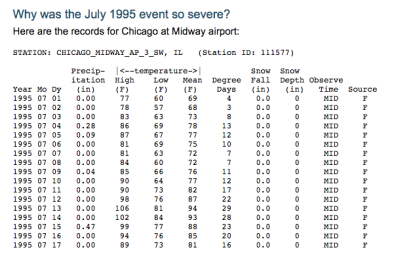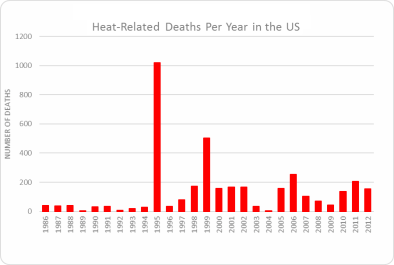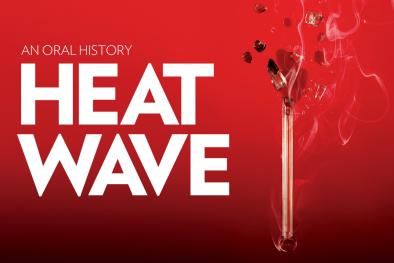Science Source
Near-Fatal Heat Stroke during the 1995 Heat Wave in Chicago
- Provides background stating Chicago sustained a heat wave in July 1995 that resulted in more than 600 excess deaths, 3300 excess emergency department visits, and a substantial number of intensive care unit admissions for near-fatal heat stroke
- Describes the clinical features of patients admitted to an intensive care unit with near-fatal classic heat stroke
- Follows 58 patients admitted to the hospital from 12 July to 20 July 1995 who met the case definition of classic heat stroke for 1 year to assess delayed functional outcome and mortality
- 100 percent of patients experienced multiorgan dysfunction with neurologic impairment
- 53 percent experienced moderate to severe renal insufficiency
- 45 percent experienced disseminated intravascular coagulation
- 10 percent experienced acute respiratory distress syndrome
- 57 percent had evidence of infection on admission
- 21 percent died in the hospital
- Most survivors recovered near-normal renal, hematologic, and respiratory status, but disability persisted, resulting in moderate to severe functional impairment in 33 percent of patients at hospital discharge
- At 1 year, no patient had improved functional status, and an additional 28 percent of patients had die
- Results show that: near-fatal classic heat stroke is associated with multiorgan dysfunction; a high percentage of patients had infection at presentation; a high mortality rate was observed during acute hospitalization and at 1 year; substantial functional impairment at discharge persisted 1 year; and the degree of functional disability correlated highly with survival at 1 year
Related Content
Headline

Apr 1, 2016 | Illinois State Climatologist Office, Illinois State Water Survey, U of I
The 1995 Heat Wave in Chicago
Headline

Apr 1, 2016 | Illinois State Climatologist Office
Heat-Related Deaths in the US
Headline

Apr 1, 2016 | Chicago Magazine
How 739 People Died in a Chicago Heat Wave
Science Source
| PubMed - NCBI
Heat waves in the United States: mortality risk during heat waves and effect modification by heat wave characteristics in 43 U.S. communities
Anderson GB and Bell ML


